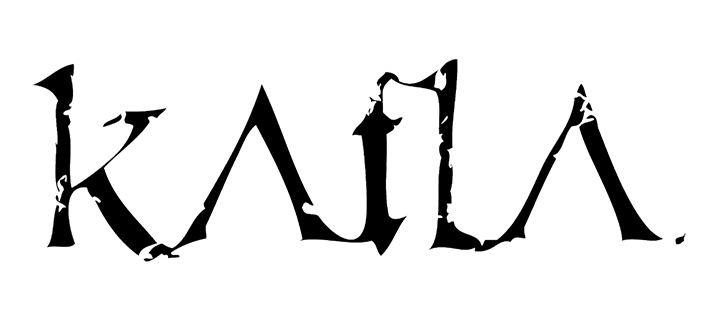
You can support Terra Relicta by donating! Please, do so, and thank you!

The Icelandic duo Katla., who artistically translate the meteorological depression of the infamous Icelandic low into the atmospheric dark doom-infused metal and deep musical emotion, was formed in 2015 when the drummer Gu∂mundur Óli Pálmason left Sólstafir. Katla. is the conceptual and musical brainchild of the two artists, Einar Thorberg Gu∂mundsson (Fortíð, Potentiam) and before mentioned Gu∂mundur. The two musicians take their art very personally, even beyond musical aspects. They released the debut EP, Ferðalok, in 2016, soon after they joined the Prophecy Productions family and released the melancholic debut album Móðurástin in 2017. Three years later, in November last year, Katla. released a stunning piece of sonic art, the immersive album Allt þetta Helvítis Myrkur. The soul-crushing heaviness fueling this record makes Katla.'s debut album Móðurástin appear nearly light-hearted by comparison. Some of this album's composition cores reach back in time for more than a decade and were born out of spontaneous rehearsal room-sessions that were only now given final shape. The final result is a cinematic musical stream of consciousness, in which many of the songs intertwine and flow into each other. Read this interesting and in-depth interview with Gu∂mundur Óli Pálmason, as he told us a lot of background things about Katla., Iceland, his visual art, and yet much more.
Interview with: Gu∂mundur Óli Pálmason
Conducted by: Tomaz
Edited by: Jerneja
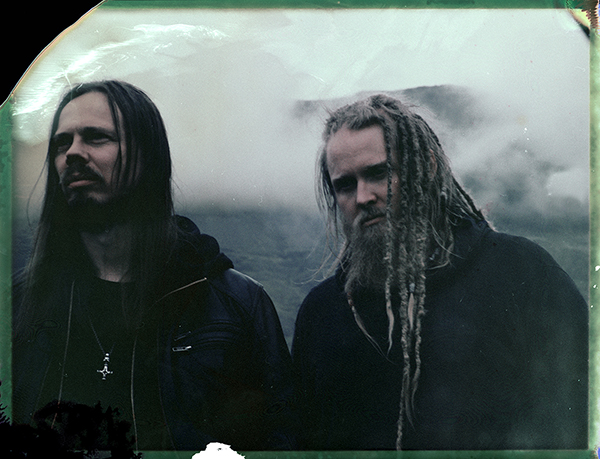 Tomaz: I need to congratulate you for making such a stunning album like it's Allt þetta Helvítis Myrkur. It's already more than three months since its release, and I wonder how was the general media and fans response? And of course, how do you look at it now?
Tomaz: I need to congratulate you for making such a stunning album like it's Allt þetta Helvítis Myrkur. It's already more than three months since its release, and I wonder how was the general media and fans response? And of course, how do you look at it now?
Guðmundur: The reception has been overwhelmingly good. No bad reviews at all (at least none that I have seen). The fans who get it really get it, I think. It's a type of album that you must dive deep into and allow yourself to be submerged in. It's an album that takes time but is rewarding if you give it that time, and that's mostly the reaction we've been hearing and reading. I can't speak for Einar, but personally, my view of this album has not changed from the first rough mix. I think it's the strongest and the most emotionally complexed album I've had a hand in making. It usually takes me about two to three years to start seeing my albums in hindsight. So ask me again in two years, haha.
Tomaz: The band is named after the volcano Katla, based in the south of your country. I see that the bands from Iceland quite often get names from volcanos and other natural wonders. So, I guess that people in Iceland must have a lot of respect for those, and I wonder how much this affects your lives?
Guðmundur: Einar and I are both very active outdoorsmen, and I used to work as a driver/guide in the tourist business until Covid. I was driving offroad trucks (google Icelandic super jeeps for some awesome vehicles), so I got to travel to all these places in the highlands most people never see nor experience, every season, every possible and impossible weather. Katla. was born as a direct consequence of this. I needed an outlet for all the inspiration these travels were giving me. That's why our debut 7" EP has songs named after real-life places in Iceland (Kaldidalur and Dómadalur - which translates to Cold Valley and Valley of Doom). Nature also plays a huge role in my other artform as a visual artist. I draw from the same pot of influence there. Music, lyrics, visuals - they are all different sips from the same cup of influences. So not to slack other bands off, but I know for a fact that some of them use this "nature worship" as a gimmick for lyrics and photoshoots only but otherwise never really leave the city. Both of us have even moved out to the countryside now.
 Tomaz: I was especially impressed by the unique video clip for "Hvítamyrkur". I guess it is connected with your job as a driver?
Tomaz: I was especially impressed by the unique video clip for "Hvítamyrkur". I guess it is connected with your job as a driver?
Guðmundur: The lyrics of "Hvítamyrkur" is inspired by a few experiences I had while driving these off-road trucks on glaciers and in the highlands in winter. The title translates to white darkness (in one word, though, so it's a noun). It's a word I invented, but it still falls perfectly into Icelandic grammar. Now the funny thing is that I didn't make the video; Einar and his wife did. He interpreted my lyrics and made it into his vision. I, on the other hand, made the videos to "Farg" (a track on the accompanying Blótar gömlu goðin EP) and to "Sálarsvefn", both of which are lyrics by Einar. It was just a coincidence that we visually interpreted each other's lyrics, but I like how it brings even more depth to our cooperation. The white darkness can be even darker than black darkness because turning the lights on doesn't help at all.
Tomaz: I have never experienced the white darkness, but I can imagine it somehow. Now, since you already mentioned a little bit about the collaboration between you and Einar, can you explain further how the music, production and lyrics get done in the case of Katla. How different it is if compared to the work in your other bands?
Guðmundur: Einar writes most of the music, and I write most of the lyrics, but we both dabble in both. We do not meet up for rehearsals and write together. It's very different from how I was mostly used to work, but I know Einar is more accustomed to this. We usually send ideas to each other over the internet, then we meet up and record. Two of the songs on the album and two of the songs on the aforementioned Blótar gömlu goðin EP were written in a rather unique way, 14 years before release. You see, Katla. is not the first time Einar and I work together, we've done that on and off since 1996 (in Hel and Potentiam), and in 2006 we had an idea for a little side project. We entered a studio, and I recorded drums to six unwritten songs. I was simply improvising. Einar then took those recordings and wrote the music on top of them. We made a whole album, but it was never released. So when we were already working on Allt þetta Helvítis Myrkur, we had the idea to re-record four of those songs. So they were written in 2006 but recorded again from scratch.
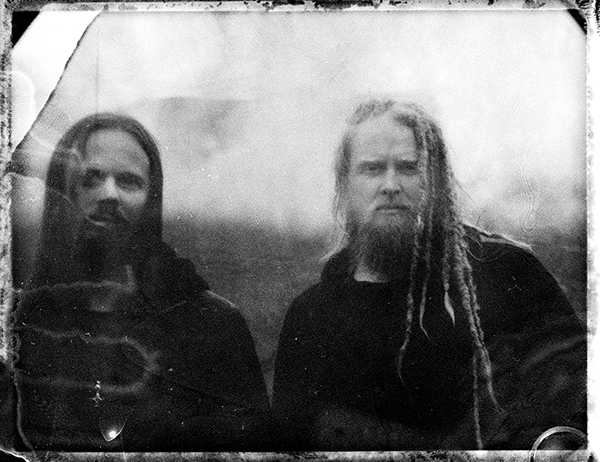 Tomaz: Tell me more about the EP you mentioned, Blótar gömlu goðin. Any details and how it's with its release?
Tomaz: Tell me more about the EP you mentioned, Blótar gömlu goðin. Any details and how it's with its release?
Guðmundur: It's was released already. It's available as a part of the deluxe version of Allt þetta Helvítis Myrkur (the artbook comes with two CDs; the LP and the EP, and the all-inclusive box has that plus also the EP on 12" vinyl). Four songs we didn't see fit totally into the LP, so we decided to keep them separated. I feel like the label didn't do much to promote it, just talking about "bonus tracks" on the deluxe edition, something I had asked them not to do. For us it's a separate "release", so to speak.
Tomaz: The new album is quite different from the debut. It's more powerful, more heavy driven with more complex songs, but yet, and strangely enough, it feels more cohesive. Móðurástin was more melancholic, but for me, at least it wasn't so very accessible. How do you compare the two albums, and what was different while you were composing them?
Guðmundur: I feel Allt þetta Helvítis Myrkur is much darker and heavier than Móðurástin. There are no "rock'n'rollers" like "Nátthagi" on this one. I think both Einar and I were coincidentally in a place after Móðurástin, where we had to deal with some dark shit in our personal lives. The title describes that perfectly I think. Production-wise it also sounds totally different. We wanted a warm, dark, analogue sound this time around, and using no outside producer or sound engineer, helped in creating our sound, as Einar handled all the recording, mixing and mastering this time around.
 Tomaz: Your lyrics are all in Icelandic, and I see that this is quite a common thing for Icelandic bands. What is the reason for that? And have you also tried writing lyrics in English or any other language with Katla.?
Tomaz: Your lyrics are all in Icelandic, and I see that this is quite a common thing for Icelandic bands. What is the reason for that? And have you also tried writing lyrics in English or any other language with Katla.?
Guðmundur: Not with Katla. We've always written in Icelandic, and that was quite important to us, or at least to me. Einar writes in English for his other band Fortíð, so maybe he's not as fanatic about it as I am. Yes, a lot of Icelandic bands sing in Icelandic now, which I think is great. Only 350.000 people in the world speak this language, and we need to preserve it. But that wasn't always the case. I remember a time in the 90s and 2000s when most Icelandic bands sang in English. I wrote some lyrics in English back then, as well as Icelandic. But around 2008 - 2009, I made a push on my band at the time, to start singing in Icelandic only (again). Writing good lyrics in Icelandic is a hundred times more difficult than English and a million times more rewarding. We put a lot of work into our lyrics, but ironically most of our listeners don't understand Icelandic. I do believe it gives a certain vibe, none the less.
Tomaz: It certainly does. I guess you are talking about Sólstafir? So, at this point, I need to ask you why did you leave the band after the album Otta in the first place? Are you still in any contact?
Guðmundur: Yes, that's the band I'm referring to. I didn't leave. It's a complicated story that would honestly be a waste of time to get into here. Also, it had been quite well documented. But those who want to can read all about it HERE.
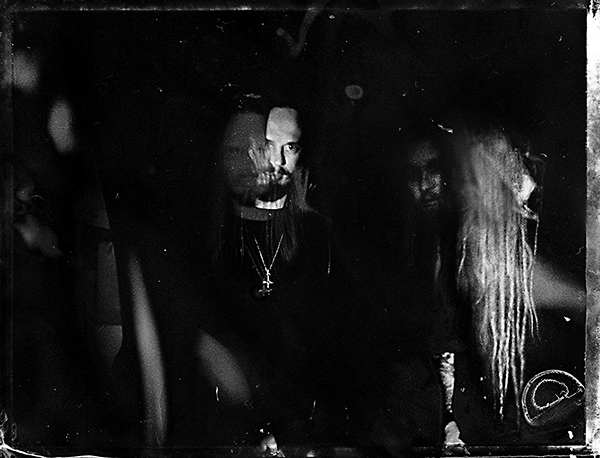 Tomaz: Haha, those vulcanos are pretty popular because Hekla is also the name of a band. Nevertheless, an interesting story. Now, tell me how it's with your live shows? Do you gather some musicians for that?
Tomaz: Haha, those vulcanos are pretty popular because Hekla is also the name of a band. Nevertheless, an interesting story. Now, tell me how it's with your live shows? Do you gather some musicians for that?
Guðmundur: There's a band called Hekla? Damn! I know there's also one called Eyjafjallajökull, hahaha. I guess I'll have to go with Bárðarbunga for my solo project! Haha... We got two of our friends, Ingvar and Hörður, who play with us live. They used to be in a brilliant Icelandic post-metal band called Momentum. Unfortunately, they have disbanded, but their album Fixation, at Rest, is one of the best Icelandic metal albums ever made, in my opinion. I urge people to check it out on Spotify or whatever they use.
Tomaz: I never had a chance to see Katla. live, but I imagine that also your live shows are more than just guys playing music. Can you describe to me what is it like to witness Katla.'s show in real?
Guðmundur: I've never seen a Katla. show either, at least not from the front, haha. We use video projections to evoke some of the visual aspects of our music. I've only done a handful of shows, and to be honest, I don't know if we'll return to do more. It's time-consuming, and we're all busy with real life. Einar and I agree we'd rather spend our spare time creating music and art than being entertainers. Because that's what it is. You can try to argue that live music is art, but you're simply reciting what you've already created, and you're doing it to entertain people. Nothing wrong with that, but at the end of the day, we all have limited time in this plane of existence, and we got to decide how to best use it.
Tomaz: Ok, I see and understand your point. Are you now as a musician active only in Katla.? And what about the other bands from your past, like before mentioned Potentiam, Mind As Mine, and Hólókaust? All dead and buried?
Guðmundur: Einar is active with Fortíð and his solo project Eldur as well. All three released something in the last quarter of 2020. I'm only really active in Katla. but making some ambient music on the side. It's kind of a double project where I make eight-hour songs and release them on my Youtube channel only (https://www.youtube.com/channel/UC2fyKJRxboNK7yJDKfg_Yzw?pbjreload=102). I started making these because I wanted some dark sounds to sleep to, not a chirping of birds, moaning of whales, and the sound of rain like most ambient sleep channels offer. The other part is what I'll eventually release on Bandcamp, Spotify and such and contains "normal length" ambient songs, but with a more melodic structure than my sleep songs - which are for the most part pretty abstract. It's just something fun to occupy my time, as I haven't had any work since Covid killed the tourist business.
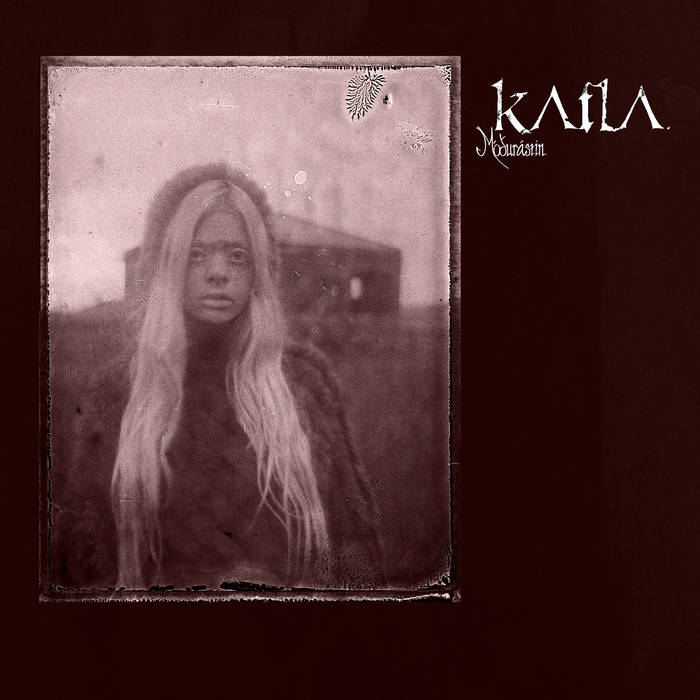 Tomaz: Huh, there's quite a lot of hours of dark ambient stuff... I see that this project doesn't have a real name yet. About what you said that you would release,... is this supposed to be dark ambient stuff? Are you searching for a label for that? I know that there are some good labels for such material.
Tomaz: Huh, there's quite a lot of hours of dark ambient stuff... I see that this project doesn't have a real name yet. About what you said that you would release,... is this supposed to be dark ambient stuff? Are you searching for a label for that? I know that there are some good labels for such material.
Guðmundur: Yeh, it doesn't have a name. The original idea was to do the Youtube thing only and have it with a black screen, so it's better to sleep. It's simply the black screen project - which is not necessarily the name of the project, though, haha. As you can see, it's not that serious. I'm mostly doing it for my enjoyment. I doubt that I'll look for a label. Here's a thing people may not understand about labels, you don't need them today unless you need an advance on a recording budget or if you want to "buy into" their distribution network. So serious bands, sure they'll be better off on a label. Small projects that only release digitally, what's a label going to do for them? Nothing, that's what! Maybe if someone wants to release my shorter songs on vinyl, I'll go for that just to have it in my personal vinyl collection, haha.
Tomaz: And what can you tell me about your other passion, the visual art you make? I see that you already had some exhibitions.
Guðmundur: I'd say visual art is my big passion in life right now. I'd rather be deaf if I had to choose to go deaf or blind. Musicians always say they'd rather go blind (I think they're laying - nobody listens to porn - you watch it, haha!). I started doing film photography in 2006, and it's been growing ever since. I sell some of it on my website www.kuggur.com, and yes, I do exhibitions. I work exclusively with a type of Polaroid films, often called peel-apart films, which I then manually manipulate with all sorts of chemicals, so there's no digital processing in my art. I've just in recent years become confident enough in my art to start telling people I'm not a photographer when they ask me to do wedding or baby photos, haha, I'm a visual artist who happens to work with analogue photography.
Tomaz: So, music, visual art, nature, is there anything else that gets you occupied in your life? What about your private life, if you are willing to share some of it with our readers?
Guðmundur: My girlfriend and my kids. I'm a pretty basic guy when it comes to it. Same with Einar.
Tomaz: What are the next steps now for Katla.? Are you already working on something new?
Guðmundur: Yes, Einar told me he has some stuff written. I don't know to what extent, though. We're both pretty preoccupied with other things at the moment, both of us moving out of the city and Einar actually building a house from scratch. So don't hold your breath for a new Katla.'s album in the next few months.
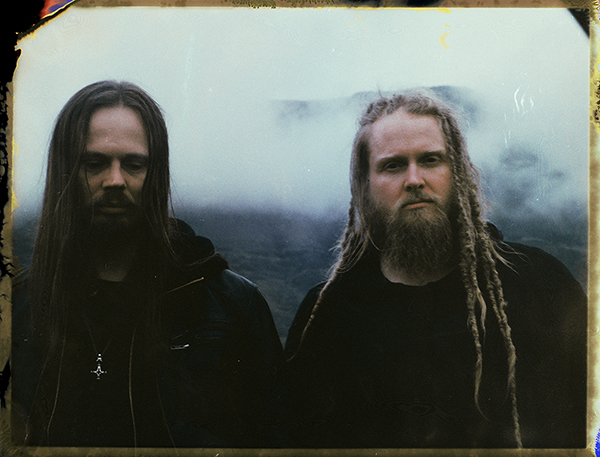 Tomaz: Before we finish, can you name me some albums that have changed your life as a musician or have inspired/influenced you more than anything else?
Tomaz: Before we finish, can you name me some albums that have changed your life as a musician or have inspired/influenced you more than anything else?
Guðmundur: We were both very much influenced by Metallica as kids and teenagers, and then we both moved over to harder stuff. Death metal for me (I think Einar was never that much into it), and then we had a black metal period in the early/mid-90s when we met. Personally, I'd have to name Fields Of The Nephilim too. Their albums The Nephilim and Elizium are, in my opinion, probably the best albums ever written.
Tomaz: Thank you very much for your straight-forward answers. It was very cool to do this interview with you. Is there anything that you would like to say at the end of it?
Guðmundur: Nothing that comes to my mind. This covers a pretty wide base. Thank you so much for your support. It's most appreciated.
Katla. links: Official web site, Facebook, Bandcamp, YouTube.